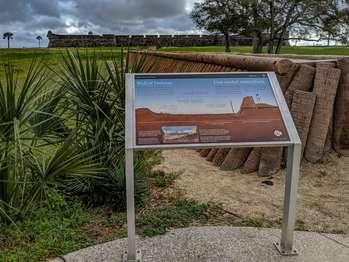Last updated: February 12, 2021
Place
Cubo Line

Quick Facts
Amenities
2 listed
Historical/Interpretive Information/Exhibits, Wheelchair Accessible
The log wall at your right is a replica of the Cubo Line. The earth-and-palm-log embankment extended from the Castillo to the San Sebastian River a half-mile behind you. Two defensive walls enclosed the city: the Cubo and Rosario lines. The Cubo Line marks St. Augustine's northern edge.
